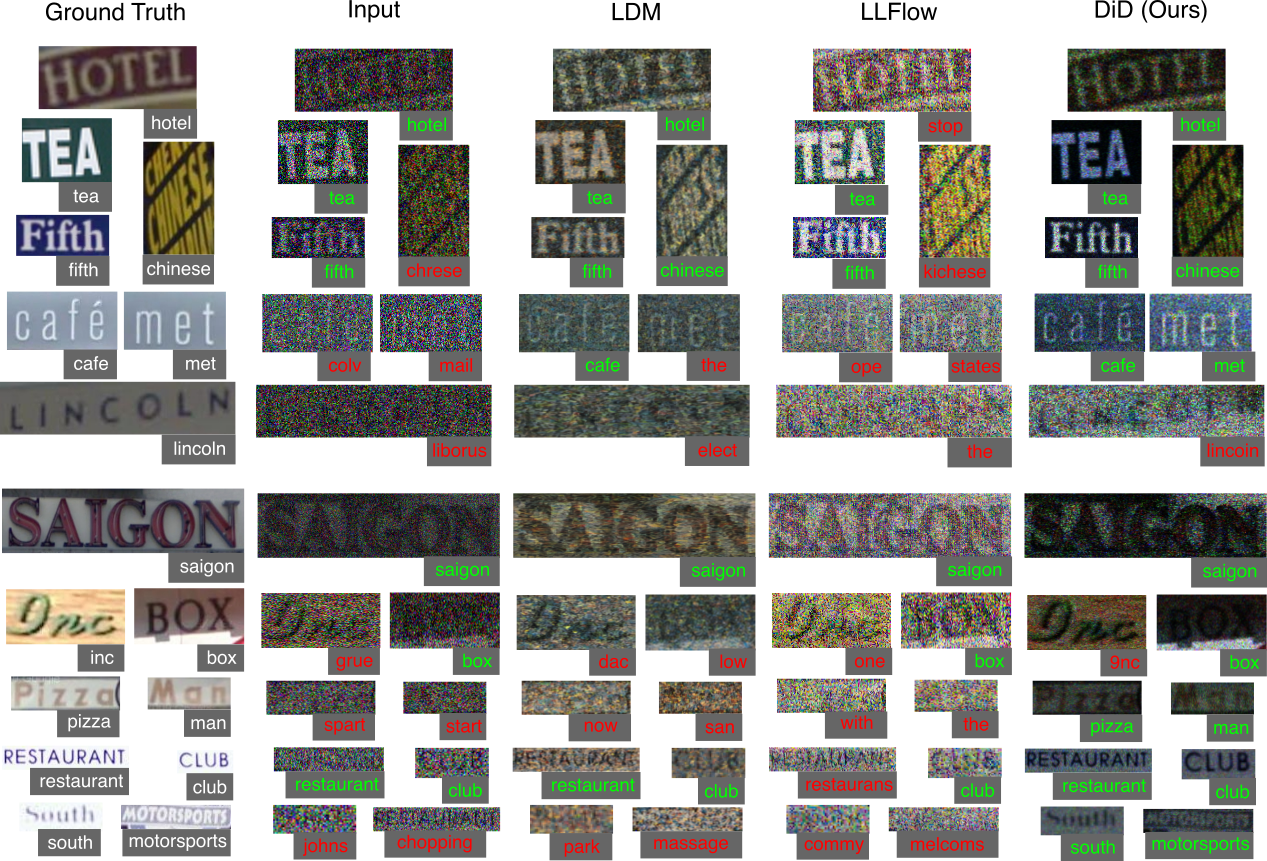
Capturing images is a key part of automation for high-level tasks such as scene text recognition. Low-light conditions pose a challenge for high-level perception stacks, which are often optimized on well-lit, artifact-free images. Reconstruction methods for low-light images can produce well-lit counterparts, but typically at the cost of high-frequency details critical for downstream tasks. We propose Diffusion in the Dark (DiD), a diffusion model for low-light image reconstruction for text recognition. DiD provides qualitatively competitive reconstructions with that of state-of-the-art (SOTA), while preserving high-frequency details even in extremely noisy, dark conditions. We demonstrate that DiD, without any task-specific optimization, can outperform SOTA low-light methods in low-light text recognition on real images, bolstering the potential of diffusion models to solve ill-posed inverse problems.



@inproceedings{nguyen2024diffusion,
author = {Nguyen, Cindy M and Chan, Eric R and Bergman, Alexander W and Wetzstein, Gordon},
title = {Diffusion in the Dark: A Diffusion Model for Low-Light Text Recognition},
journal = {Proceedings of the IEEE/CVF Winter Conference on Applications of Computer Vision},
year = {2024},
}